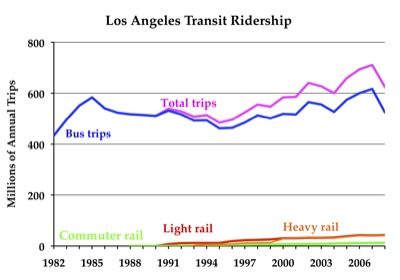Last week, Los Angeles became the first major city in American to coordinate all its traffic signals. The city spent $410 million coordinating signals at 4,000 intersections, or about $100,000 per intersection.
The $410 million cost is less than the cost of one mile of L.A.’s proposed Westside Subway Extension and about the same as the cost of two miles of Portland’s latest light-rail line. Yet the signal coordination will do far more to relieve congestion, save energy, and reduce air pollution than both of these rail projects put together–more, in all probability, than all rail transit projects in the United States.








